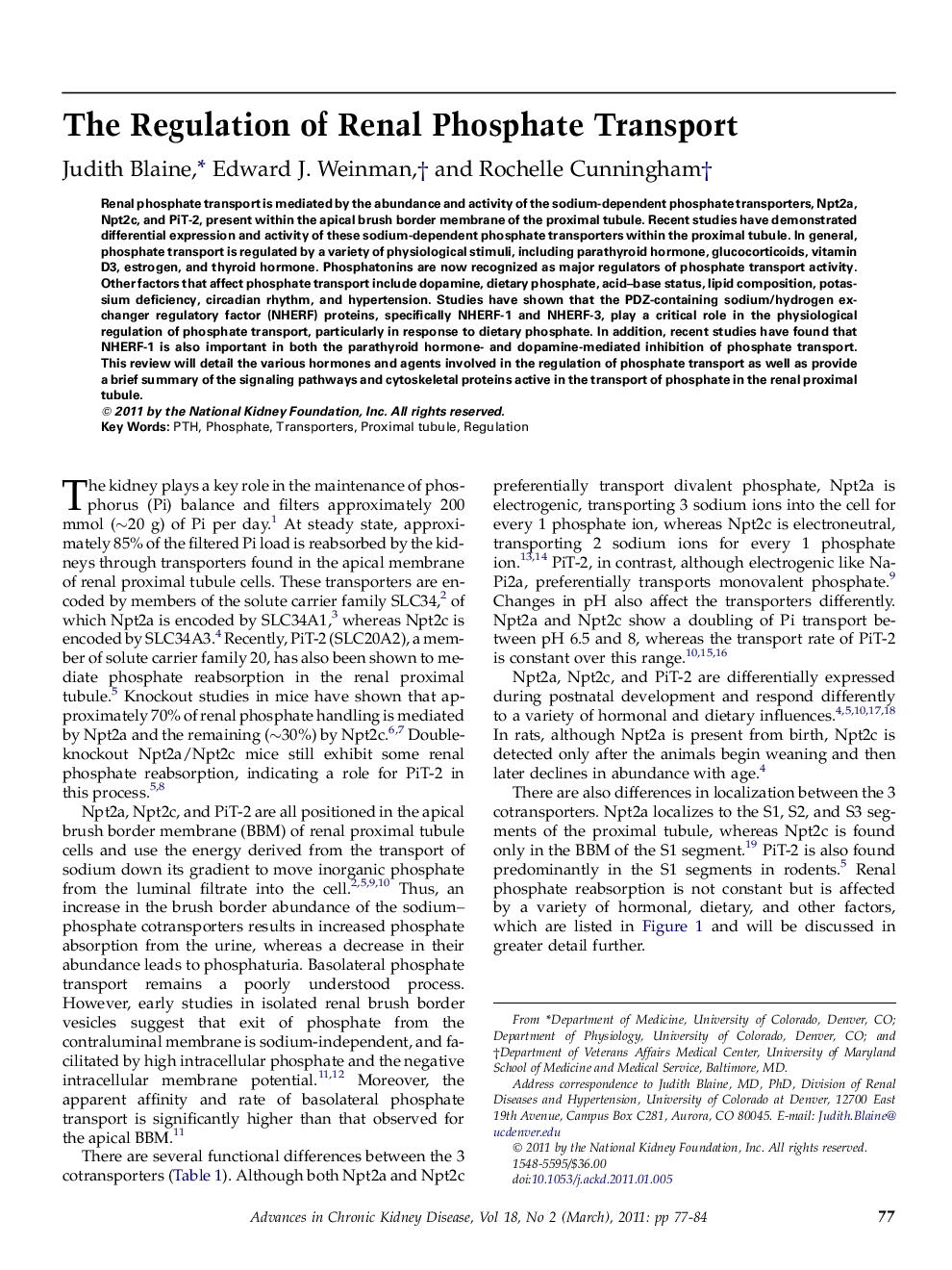| Article ID | Journal | Published Year | Pages | File Type |
|---|---|---|---|---|
| 3847059 | Advances in Chronic Kidney Disease | 2011 | 8 Pages |
Abstract
Renal phosphate transport is mediated by the abundance and activity of the sodium-dependent phosphate transporters, Npt2a, Npt2c, and PiT-2, present within the apical brush border membrane of the proximal tubule. Recent studies have demonstrated differential expression and activity of these sodium-dependent phosphate transporters within the proximal tubule. In general, phosphate transport is regulated by a variety of physiological stimuli, including parathyroid hormone, glucocorticoids, vitamin D3, estrogen, and thyroid hormone. Phosphatonins are now recognized as major regulators of phosphate transport activity. Other factors that affect phosphate transport include dopamine, dietary phosphate, acid-base status, lipid composition, potassium deficiency, circadian rhythm, and hypertension. Studies have shown that the PDZ-containing sodium/hydrogen exchanger regulatory factor (NHERF) proteins, specifically NHERF-1 and NHERF-3, play a critical role in the physiological regulation of phosphate transport, particularly in response to dietary phosphate. In addition, recent studies have found that NHERF-1 is also important in both the parathyroid hormone- and dopamine-mediated inhibition of phosphate transport. This review will detail the various hormones and agents involved in the regulation of phosphate transport as well as provide a brief summary of the signaling pathways and cytoskeletal proteins active in the transport of phosphate in the renal proximal tubule.
Related Topics
Health Sciences
Medicine and Dentistry
Nephrology
Authors
Judith Blaine, Edward J. Weinman, Rochelle Cunningham,
